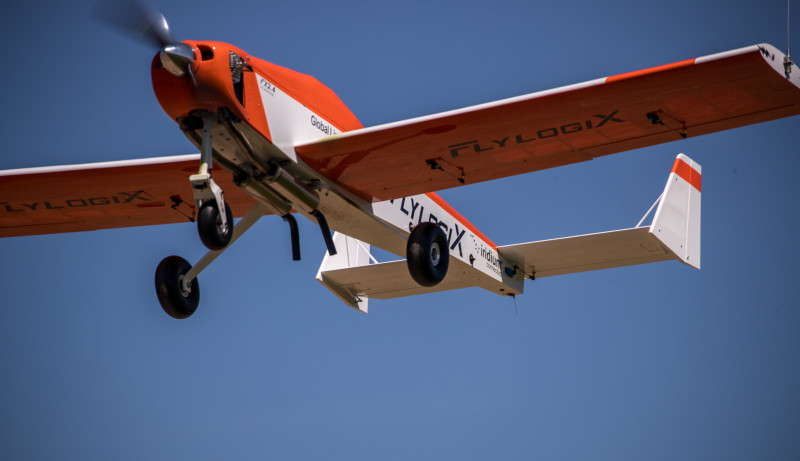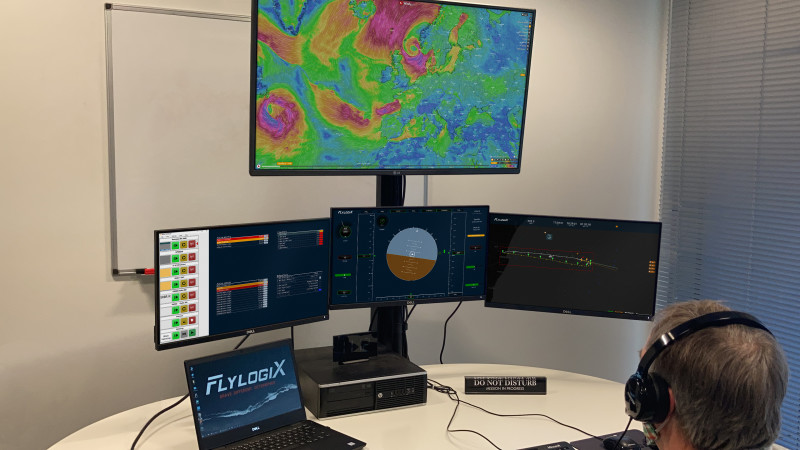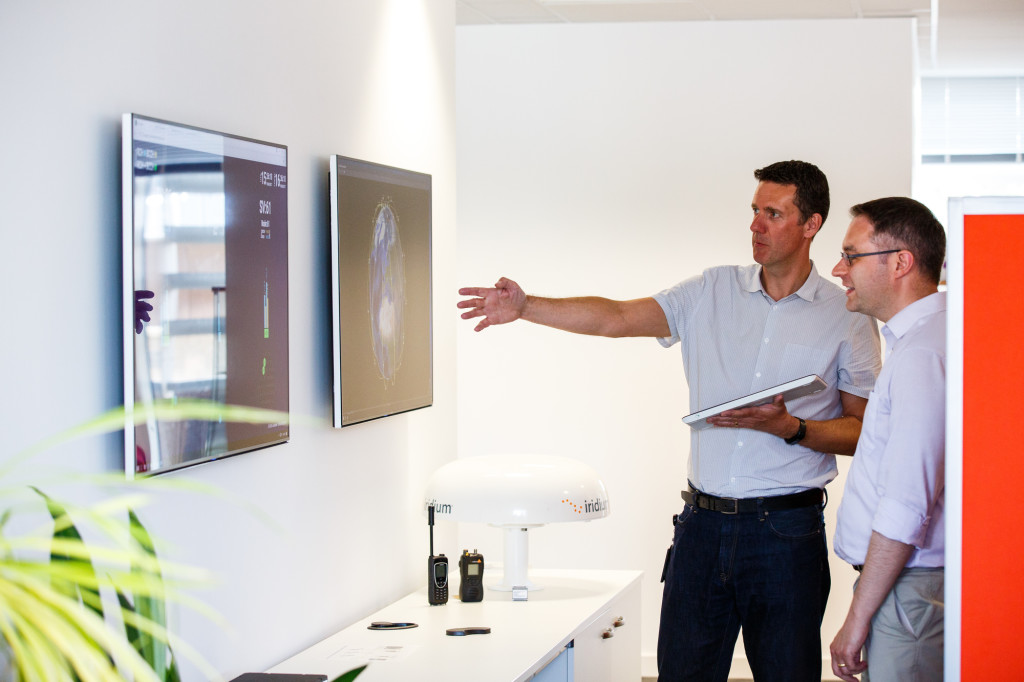When the industry talks about beyond visual line of sight (BVLOS) or other advanced operations, the focus is usually on getting over regulatory hurdles. But there is a lot more to consider when looking to make these types of operations commercially viable.
Many of the BVLOS operations out there tend to be at a relatively small scale, but what happens when these operations try to scaleup? A large fleet of drones conducting BVLOS operations requires a more complex system and infrastructure to manage everything safely and securely.
Solving the logistical, technical, and systemic challenges that come with building larger, more complex systems is something that Cambridge Consultants specialize in, and they are already bringing their years of experience to bear for companies globally.
With a staff of over 900 engineers, scientists, mathematicians and designers with offices all over the globe, Cambridge Consultants are tackling some of the biggest issues facing the UAV industry from ensuring ultra-reliable communications and AI, to building cost-effective, lightweight, low-power sensor systems for things like collision avoidance and mission critical systems, like UTM.
 Because of their long history of working on these challenges and building viable solutions for their clients, Commercial UAV News spoke with Stewart Marsh, Head of Aerospace at Cambridge Consultants, to get his take on what is needed for BVLOS to truly scale and more.
Because of their long history of working on these challenges and building viable solutions for their clients, Commercial UAV News spoke with Stewart Marsh, Head of Aerospace at Cambridge Consultants, to get his take on what is needed for BVLOS to truly scale and more.
Marsh has worked with Cambridge Consultants for about ten years and in the technology industry for over 20 years. He has experience across aerospace, mobile communications, location-based services, transportation, and traffic control technology, which made him the ideal person to connect with on the topic of building out scalable advanced operations.
Danielle Gagne: You recently announced a project for Flylogix where you helped them take their BVLOS service for the monitoring of offshore oil exploration and production activities to the next level. What were the key achievements and highlights of this project?
Stewart Marsh: This was a really interesting project where we helped Flylogix send drones beyond the horizon to offer remote monitoring for oil and gas operators on a global scale. Safety, accurate and timely operational data is vital for these industries, so it was an ideal use case for unmanned aviation.

Image courtesy of Flylogix
Flylogix already had the capability to fly BVLOS locally in the UK. Our mission was to move the drone piloting from the airfield to become centrally controlled. Moving teams around to the different places you need to fly from is logistically challenging if you want to operate globally. Flylogix wanted to be able to fly outside of the UK into some of the more remote oil fields, such as those in the North Sea around Norway. For this you really need a central control system that can operate anywhere. We were able to develop that communication system with all the attributes that were needed to work worldwide.
One of the highlights was that the system exploited Iridium’s global satellite constellation. We’ve have been a core technology partner for Iridium for many years and have helped develop vital network components, including transceivers, gateway systems and service management platforms, alongside multiple generations of handsets that can access Iridium’s Low Earth Orbit (LEO) satellite platform.
The Flylogix project is transforming the safety, cost and environmental impact of gathering data from offshore platforms. Before Flylogix, the oil and gas industry would fly manned fixed wing aircraft or helicopters, which are very expensive and have a significant environmental impact. Utilizing UAVs makes a big difference, improving safety, reducing cost and carbon emissions.
Overall, the project with Flylogix massively increased the scale and capability of their services to these offshore installations. It’s a good example of how complex, safety-critical functions can be serviced from a central hub. I am excited to see the project evolve.

Mission Control. Image courtesy of Flylogix
As use cases for BVLOS start to become more viable with more centralized control capabilities, like what you provided to Flylogix, where is the market going and where is the opportunity?
BVLOS can make existing line-of-sight use cases more scalable and enable a host of new opportunities. BVLOS is possible today, but personnel typically have to travel to the launch site and establish a mobile ground control station. The FAA and CAA in the UK have placed a lot of restrictions on BVLOS flight. Depending on the capability of the aircraft, these restrictions usually include things like having to define a danger zone or exclusion zone to operate in. All this takes time to plan. It is very difficult to conduct ad hoc or spontaneous operations, so you can’t really respond to things that happen in real time.
Scaling this model globally is not economically viable. This is why global control capabilities are really exciting. Moves within the UAV industry to centralize control will remove this barrier and enable truly global UAV operations.
We see this leading to a future where companies across a range of different markets will utilize fully autonomous UAV operations to streamline and optimize their operations. For example, companies with large infrastructure footprints, such as telecom operators, energy suppliers and transportation infrastructure operators, will be able to reduce the manual input required for monitoring and maintenance of their assets. Beyond using drones to collect data and detect incidents in real time, advanced machine learning techniques can be used to predict when future maintenance will be required. Low-power, high-performance compute platforms will enable more of this intelligence to move to the drone, improving autonomy and reducing data bandwidth requirements. These combined evolutions will offer substantial cost advantages to companies that are able to harness the benefits.
Adding Detect and Avoid (DAA) capability to UAVs will greatly reduce the operational overhead currently required for remotely piloted drones. Although this technology already exists for military UAVs, the cost and complexity are prohibitive for commercial operation. Advances in this technology will be a game changer for commercial UAVs as low-cost sensors, combined with on-board intelligence, will enable the dynamic operation required to move away from the segregated fly zones required today.
What are some of the challenges or hurdles we have to overcome to ensure these opportunities can scale?
As an emerging technology today, BVLOS is hampered by safety concerns, which means companies need to overcome regulatory hurdles to begin trialing and using these systems.
Both the FAA in the US and CAA in the UK are working hard to relax requirements as confidence in the technologies required to achieve safe BVLOS increases. The FAA made its first approval of automated drone operations without human pilots or observers on-site in January, and late last year the UK invested in a project to demonstrate BVLOS Unmanned Aircraft Systems (UAS) operations in non-segregated airspace. So, progress is being made, but more can be done from a technology standpoint to alleviate concern and encourage regulators to ease requirements.
The solution to these concerns lies at the intersection of a range of technologies and industries. Safe BVLOS will require various technologies to come together and work seamlessly. The future BVLOS ecosystem will consist of companies from the telecoms, sensor and traffic management sectors, and so on. Companies that maximize the BVLOS opportunity will be the ones that can effectively combine a range of competencies – whether that’s through developing them in-house, working closely with development partners or leveraging the wider vendor ecosystem.
As a technology company, what advances are you working on that will help overcome these challenges?
One of the exciting technologies we are working on is in global satellite communications. Low latency, highly reliable comms links will be essential for UAVs. With Iridium’s second-generation communications transceivers enabling a wider communications pipe, Iridium Certus will enable Flylogix to expand its missions by creating additional deliverable opportunities, further increasing value to its customers. Bringing the size, weight, and power down on the satellite transceivers that go into UAVs is one crucial area we are working on. The transceiver used in the Flylogix project weighs just 185g and has an average power consumption of just 5W.
Other areas we are working on include sensors, bringing the cost, weight, and power requirements on these down as well. Coupling sensors, such as cameras and Lidar to existing UAV systems, such as Autopilots and Auto take-off and landing systems, provide enhanced situational awareness and therefore the opportunity for greater levels of UAV automation. Sensor fusion will enable low-cost sensors to be used and the AI advances we are working on will also enable operation in more challenging environments, offering increased levels of automation and protection (for example, Detect and Avoid).
A real game changer is going to be a combination of low-cost, light weight, and low-power sensor technology with intelligence. With AI on the UAVs themselves, it will enable some of the benefits for more complex systems to be realized at both lower cost and smaller form factors. All this translates to extended flight time and greater autonomy, both of which add value to our customers.
How do Unmanned Traffic Management systems need to evolve to support BVLOS?
Digitizing airspace is a key aspect of UTM. Building that digital picture requires a whole range of different technologies, including planning tools, tracking services and communications systems. Automatic identification systems onboard UAVs and other assets will be important going forward, along with the communication links to reliably convey that information. Advances in technologies such as Holographic Radar will enable ground-based tracking by powering a fully digital picture of the sky in key locations.
Autonomy will also play a key part in the evolution of UTM systems, particularly as the number of UAVs in our skies increase. AI will play a part in planning, monitoring and controlling many aspects of UAV operations.
And finally, unlocking the global possibilities of commercial BVLOS UAV operations will require UTM systems to interoperate, with the technical and regulatory challenges that will need to be addressed. The digital services technologies that will enable this include cloud services, blockchain, and the APIs that will enable the building blocks of the UTM systems to interconnect.
What would be your advice for anyone struggling to achieve these technical milestones?
From our experience with the projects that we do and the clients we engage with, there are a lot of technologies that go into delivering the services and products we are talking about here. It’s unlikely that companies are going to have all the expertise they need to do everything in house. Some of the companies that make the biggest breakthroughs are those that successful recognize that partnering with companies, like Cambridge Consultants, can help achieve some of the things that they don’t have the in-house capability for.
We are partnering with several companies on BVLOS initiatives already, bringing deep expertise in wireless comms and digital services that works in complement to the skills of our partners, resulting in some really exciting developments.
To learn more about how Cambridge Consultants and other leaders in the industry are scaling advanced operations join us on Tuesday, March 2nd from 11:00 AM to 12:00 PM EST for the webinar “Tips to Getting Advanced Drone Operations Off the Ground.”
You can RSVP here.
















Comments